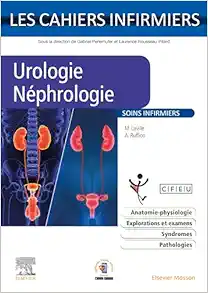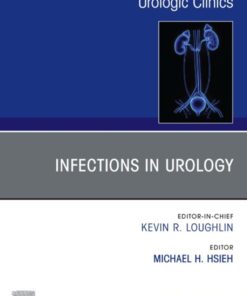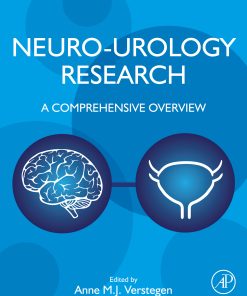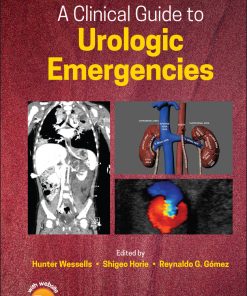Untersuchung von linearen und zirkulären Transkripten des TRAM1- und S100A6-Genlokus im Kontext des Harnblasenkarzinoms
$6
Format : Publisher PDF
File Size : 2.7 MB
Untersuchung von linearen und zirkulären Transkripten des TRAM1- und S100A6-Genlokus im Kontext des Harnblasenkarzinoms
In an age where cancer still stands as one of the deadliest and most misunderstood diseases, finding viable diagnostic methods for early detection is more crucial than ever. In her latest book, titled “RNA-based biomarkers in urine for non-invasive detection of bladder cancer,” esteemed author Josephine Dubois highlights the potential of RNA-based markers for diagnosing and monitoring bladder cancer, a condition that affects millions worldwide.
Bladder cancer is one of the most commonly diagnosed cancers globally, with up to 430,000 new cases reported each year. Unfortunately, diagnoses often come at later stages, leading to lower survival rates and limited treatment options. Dubois’s book sheds light on the potential of identifying RNA-based biomarkers to improve early diagnoses and treatment outcomes while reducing the costs and risks associated with invasive testing methods.
The book’s opening chapter provides an overview of bladder cancer, including its causes, risk factors, and current diagnostic procedures. As Dubois notes, traditional diagnostic methods are invasive, time-consuming, and expensive, making them difficult to access for patients in low-income countries or those who lack health insurance. By laying out the limitations of current procedures, Dubois highlights the urgent need for non-invasive, cost-effective alternatives.
The subsequent chapters delve into the science of RNA-based biomarkers and their potential uses in bladder cancer diagnostic methods. Dubois compares the RNA transcriptions of healthy individuals and those with advanced-stage bladder cancer, identifying potential RNA markers that could facilitate early diagnosis and treatment. Further, the book delves into the analysis of linear and circular RNA species of the TRAM1 and S100A6 gene locus to identify potential tumor markers for bladder cancer.
One of the standout highlights of Dubois’s book is her discussion of circular RNA species. While linear RNA species have been well-studied in the context of cancer research, circular RNA species remain a relatively unexplored area. Dubois examines the potential of circular RNAs, which she notes could be more stable in bodily fluids and could have unique biological functions, potentially leading to novel therapeutic strategies.
As someone without a background in bladder cancer research or RNA sequencing, I found Dubois’s book to be informative and approachable. She explains scientific concepts in an accessible manner, making the book accessible to those new to the topic. Moreover, Dubois’s passion for this topic is evident throughout the book, adding depth and credibility to her arguments.
Overall, Dubois’s “RNA-based biomarkers in urine for non-invasive detection of bladder cancer” is an enlightening and timely resource for those interested in cancer research or urinary biomarkers. Her extensive research and thorough analysis of current diagnostic procedures provide compelling evidence for the potential of RNA-based markers in bladder cancer diagnosis and monitoring.
After reading Dubois’s book, I feel motivated to learn more about RNA-based biomarkers for cancer diagnosis, and I would highly recommend this book to anyone looking to expand their knowledge in this area. Its informed analysis and compelling insights make it an essential resource for researchers, medical professionals, and healthcare policymakers.
If you’re invested in finding a better way forward for bladder cancer diagnosis and treatment, we recommend that you order a copy of “RNA-based biomarkers in urine for non-invasive detection of bladder cancer” today. Its insights and practical applications will undoubtedly prove valuable to anyone interested in the field.
Product Details
- Publisher: Springer Fachmedien Wiesbaden; January 10, 2023
- Language: German
- ISBN: 9783658403577
- ISBN: 9783658403584
Related Products
UROLOGIC SURGERY
Diagnostic Challenges in Urologic Pathology 2024 – USCAP (Videos)
UROLOGIC SURGERY
UROLOGIC SURGERY
Case Studies in Urologic Disorders (Original PDF from Publisher)
UROLOGIC SURGERY
Urologie-Néphrologie (French Edition) (True PDF from Publisher)
UROLOGIC SURGERY
UROLOGIC SURGERY
UROLOGIC SURGERY
Urologie: Réussir ses EDN, 6th edition (True PDF from Publisher)
UROLOGIC SURGERY
Bladder Pathology, 2nd edition (Original PDF from Publisher)
UROLOGIC SURGERY
UROLOGIC SURGERY
Video Atlas of Hypospadias Surgery (Original PDF from Publisher)
UROLOGIC SURGERY
UROLOGIC SURGERY
UROLOGIC SURGERY
UROLOGIC SURGERY
Kinderurologie In Klinik Und Praxis (Original PDF From Publisher)
UROLOGIC SURGERY
UROLOGIC SURGERY
UROLOGIC SURGERY
UROLOGIC SURGERY
UROLOGIC SURGERY
Hinmans Atlas Der Urologischen Chirurgie (Azw3+EPub+Converted PDF)
UROLOGIC SURGERY
Urologie Essentials, 2nd Edition (Original PDF From Publisher)
UROLOGIC SURGERY
Referenz Urologie – Operationsmethoden (Original PDF From Publisher)
UROLOGIC SURGERY
UROLOGIC SURGERY
Urologic Clinics Of North America 2023 Full Archives (True PDF)
UROLOGIC SURGERY
UROLOGIC SURGERY
2021 Prostate MRI (Program 1) – John F. Feller, M.D (Videos)
UROLOGIC SURGERY
UROLOGIC SURGERY
UROLOGIC SURGERY
UROLOGIC SURGERY
UROLOGIC SURGERY
UROLOGIC SURGERY
UROLOGIC SURGERY
UROLOGIC SURGERY
Current Diagnosis and Treatment of Nocturia (UNI-MED Science)
UROLOGIC SURGERY
UROLOGIC SURGERY
UROLOGIC SURGERY
Dr. Patrick Walsh’s Guide to Surviving Prostate Cancer, 4th Edition
UROLOGIC SURGERY
UROLOGIC SURGERY
UROLOGIC SURGERY
UROLOGIC SURGERY
UROLOGIC SURGERY
UROLOGIC SURGERY
UROLOGIC SURGERY
UROLOGIC SURGERY
UROLOGIC SURGERY







































































































